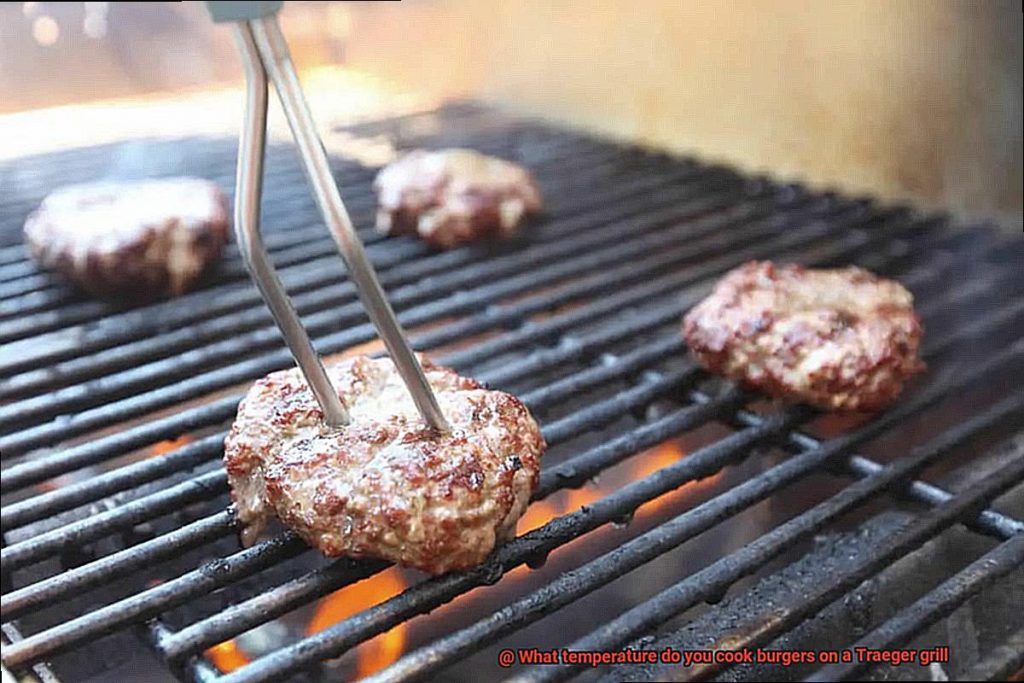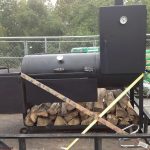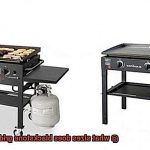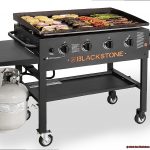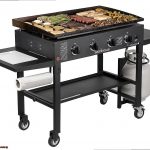Do you want to master the art of grilling delicious burgers every time? Say goodbye to dry and overcooked patties by learning the perfect temperature to grill burgers at.
Picture this: a juicy, flavorful burger with a beautifully seared exterior that’s cooked to perfection. Sounds mouth-watering, right? Well, it’s not as hard as you think. In this article, we’ll explore the ideal temperature range for grilling burgers and share some pro tips for achieving optimal flavor and juiciness.
But first, let me tell you a little secret. The quality of your beef is crucial when it comes to making great-tasting burgers. You want beef with a good fat content – lean ground beef just won’t cut it. A little bit of fat goes a long way in keeping your burgers juicy and flavorful.
Now, back to the main event. To achieve that perfect burger, you’ll want to aim for a grill temperature between 350-400 degrees Fahrenheit. This range allows for that beautiful sear on the outside while keeping the interior juicy and cooked just right. And don’t forget – preheating your grill for at least 10-15 minutes is key for even heat distribution.
But how can you ensure your burger is cooked to perfection? Don’t worry – we’ve got you covered. From using a meat thermometer to checking for doneness by touch, we’ll go over all the methods so you can find what works best for you.
So grab your apron, fire up that grill, and get ready to impress your guests with perfectly grilled burgers every time.
Contents
Ideal Temperature for Grilling Burgers
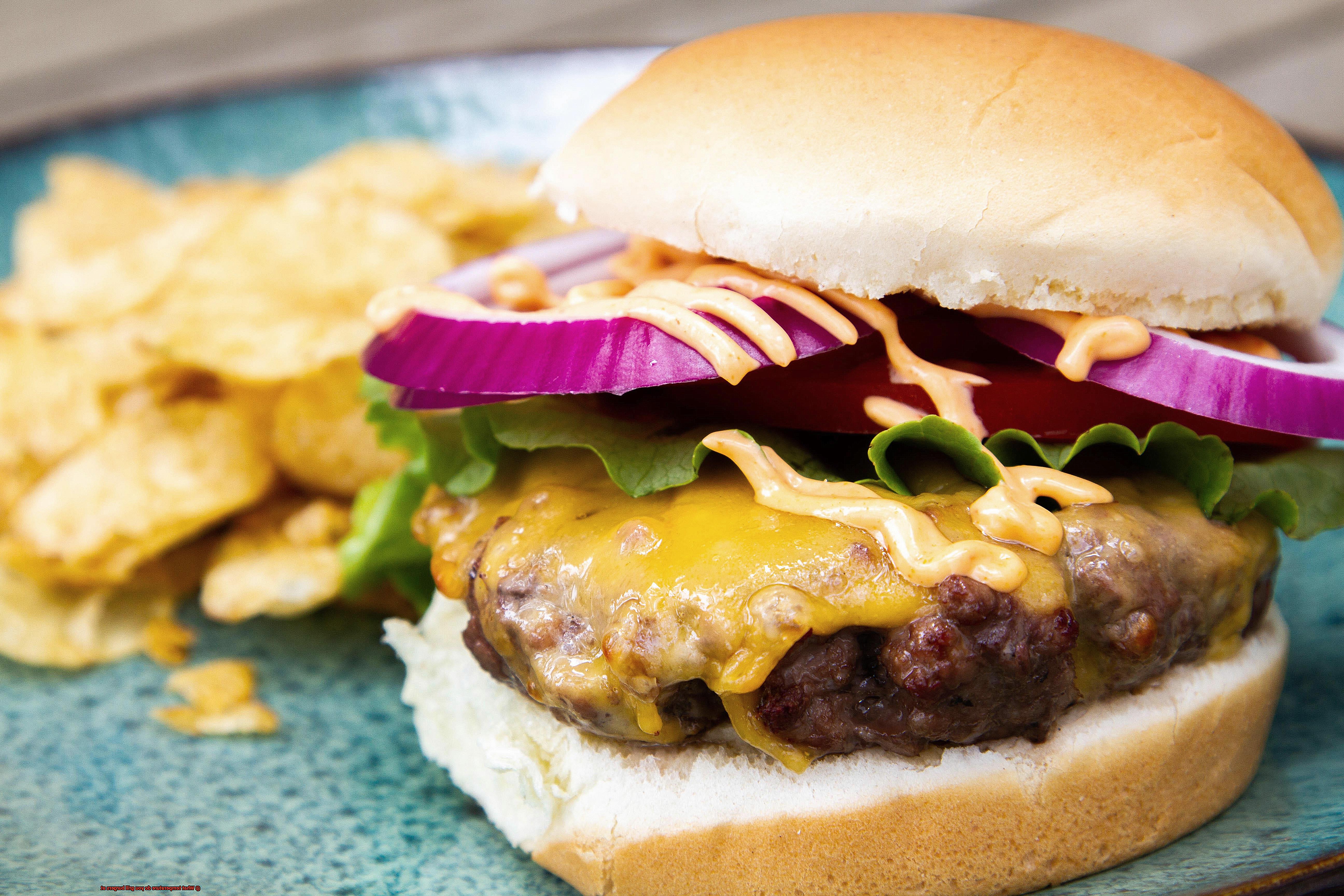
Look no further. As an expert in the field, I’m here to share with you all the secrets for achieving the ideal temperature for grilling burgers.
The recommended temperature range for grilling burgers is between 350-400°F (175-205°C). This temperature range allows the burgers to cook evenly, develop a delicious crust on the outside while retaining moisture and juiciness on the inside. However, it’s important to note that cooking at too high of a temperature can lead to dry, overcooked, or burned burgers, while grilling at too low of a temperature can result in undercooked or raw meat.
To ensure that your burgers are cooked to perfection, it’s crucial to use a meat thermometer to check the internal temperature of the burger. The ideal internal temperature for a medium-rare burger is 130-135°F (55-57°C), while a medium burger should be cooked to an internal temperature of 135-145°F (57-63°C). For those who prefer their burgers well-done, it should be cooked to an internal temperature of 160°F (71°C).
Now that we’ve covered the ideal temperature range and how to check for doneness let’s dive into some additional tips that can help you grill the perfect burger:
- Start with high-quality beef that has a fat content of at least 20% for maximum flavor and juiciness.
- Avoid overhandling the meat when forming the patties. Overworking the meat can cause it to become tough and dry.
- Season your burgers generously with salt and pepper before grilling them. You can also add other seasonings like garlic powder, onion powder, or smoked paprika for extra flavor.
- Create an indentation in the center of each patty before grilling. This helps prevent the burgers from puffing up and ensures even cooking.
- Let the burgers cook undisturbed for about 4-5 minutes on each side before flipping them. This allows them to develop a delicious crust while retaining moisture on the inside.
- Avoid pressing down on the burgers with a spatula while they’re cooking. This can cause the juices to escape and result in dry, overcooked burgers.
Factors That Affect the Temperature of Grilled Burgers
Grilling isn’t just about cooking food, it’s an opportunity to create a masterpiece. To achieve the perfect burger, there are several factors that can affect the temperature and overall flavor of your creation. As a burger expert, I’m here to share some of the most important factors that can impact the temperature of your grilled burgers.
One of the most critical factors to consider is the type and thickness of the meat. Thick patties require lower temperatures and longer cooking times to ensure they cook evenly throughout. On the other hand, thinner patties can be cooked at higher temperatures for a shorter period of time. So, before you start grilling, take note of the thickness of your patties and adjust your temperature accordingly.
The heat source used for grilling is another crucial factor that affects burger temperature. Charcoal grills tend to produce more intense heat than gas grills, so it’s essential to adjust your cooking temperature accordingly. Additionally, wind and weather conditions can also impact the temperature of your grill and how quickly your burgers cook. Keep an eye on the weather and adjust accordingly.
The placement of your burgers on the grill can also impact cooking temperatures. Burgers placed directly over high heat will cook faster than those placed over indirect heat. It’s crucial to monitor the temperature of your grill and adjust burger placement accordingly to avoid overcooking or undercooking.
Finally, the desired level of doneness is a critical factor that affects cooking temperatures. Internal temperatures will vary depending on how you like your burger cooked. A rare burger should be cooked to an internal temperature of 120-125°F, while a well-done burger should be cooked to an internal temperature of 160°F or higher. Use a meat thermometer to ensure your burgers reach the appropriate internal temperature for food safety.
How to Check the Internal Temperature of Burgers
When it comes to grilling burgers, ensuring that they are cooked thoroughly and reach a safe internal temperature is essential. Eating undercooked or raw meat can lead to foodborne illnesses, which can cause severe health problems. Fortunately, there are several ways to check the internal temperature of your burgers to ensure that they are safe to eat. Here are five sub-sections explaining how to check the internal temperature of burgers.
Use a Meat Thermometer
One of the most reliable ways to check the internal temperature of burgers is by using a meat thermometer. This kitchen tool is designed explicitly for measuring the internal temperature of meat and poultry accurately. To use a meat thermometer, insert the probe into the thickest part of the burger, avoiding any bones or gristle, and wait for the reading to stabilize. The recommended internal temperature for burgers is 160°F (71°C) for ground beef, turkey, or chicken.
Visual Cues
Visual cues can provide an indication of the doneness of your burgers. As the burger cooks, it changes color from pink to brown, and its juices become clear instead of pink or red. However, relying solely on visual cues can be misleading since some meats may appear cooked on the outside but remain undercooked on the inside.
The Touch Method
The touch method is another way to check if your burger is cooked to perfection. Press the center of the burger with your finger and compare its firmness to different parts of your hand. If it feels as firm as the tip of your nose, it is cooked to an internal temperature of about 160°F (71°C). If it feels as firm as your forehead, it is cooked to an internal temperature of about 170°F (77°C), which is considered well-done. However, using this method may not be as accurate as using a meat thermometer.
Avoid Pressing Down on Burgers
Pressing down on burgers while cooking them can cause them to lose their juices and dry out, resulting in less flavorful and juicy burgers. Therefore, avoid pressing down on burgers with a spatula while cooking them.
Adjust Temperature
The ideal temperature for grilling burgers is around 375-400°F (190-205°C). This temperature range ensures that the burgers cook evenly and reach a safe internal temperature of 160°F (71°C) without drying out. However, the exact temperature may vary depending on the type of grill you’re using, the thickness of the burger patty, and whether you prefer your burgers rare, medium, or well-done.
Tips for Maintaining a Consistent Heat Level When Grilling
When it comes to grilling burgers, maintaining a consistent heat level is crucial. A poorly cooked burger can ruin the taste and texture of your meal. Here are five tips to help you achieve a consistent heat level when grilling burgers:
Start with a clean grill
Before you begin cooking, make sure your grill grates are clean and free of debris or leftover food particles. This will ensure that your burgers cook evenly and safely.
Use a thermometer
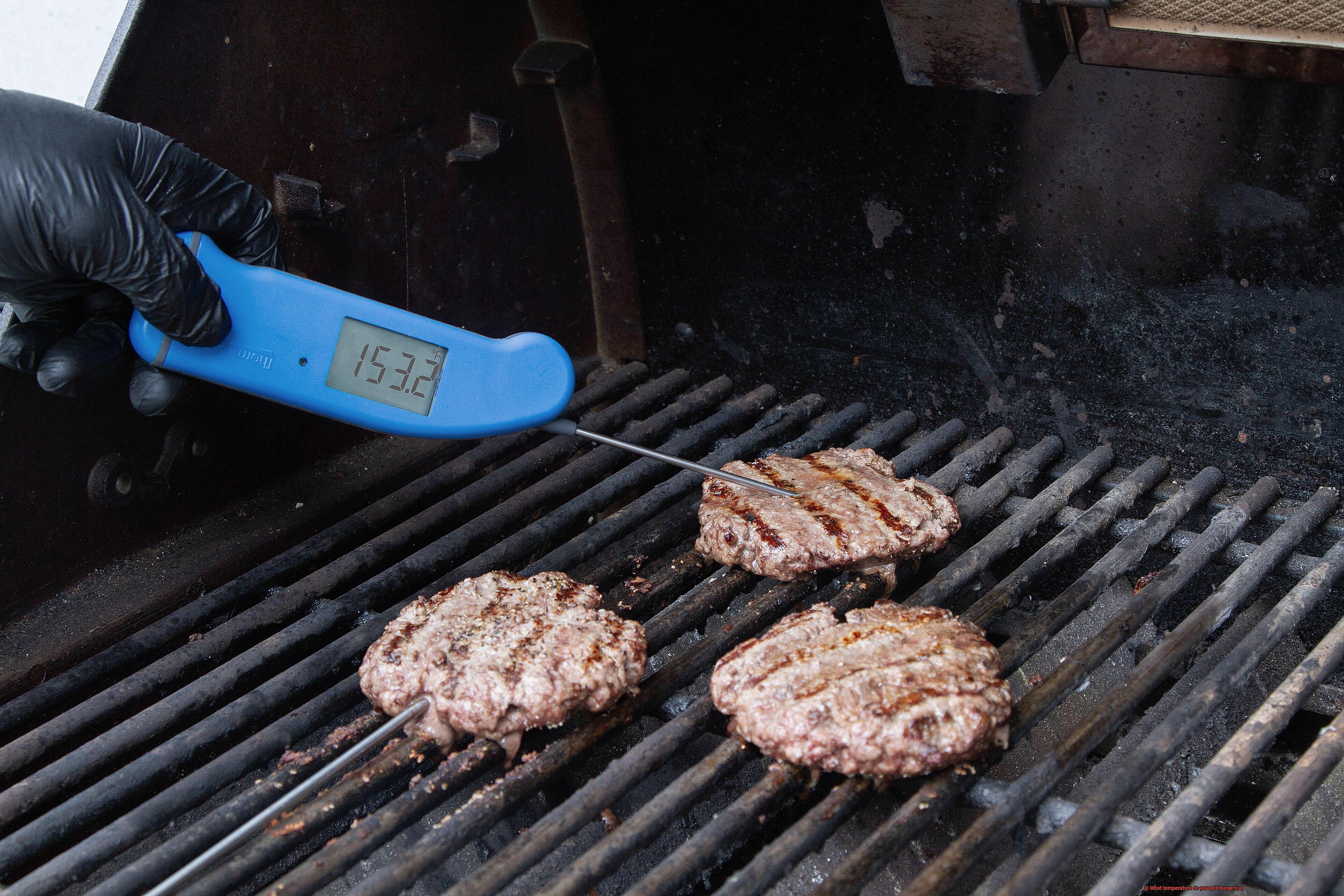
To get an accurate read on the temperature of your grill, invest in a high-quality meat thermometer. This will help you maintain a consistent heat level and avoid overcooking or undercooking your burgers.
Preheat your grill
Preheating your grill is essential to ensure that it reaches the desired temperature before you start cooking. Allow your grill to heat up for at least 10-15 minutes before placing your burgers on the grill.
Create temperature zones
By setting up different temperature zones on your grill, you can cook your burgers at different heat levels depending on how well done you like them. This will ensure that all of your burgers cook evenly and safely.
Don’t flip too often
Flipping your burgers too often can cause them to lose their juices and become dry. Instead, flip them only once during cooking and leave them undisturbed until they’re ready to be flipped again.
Pros and Cons of Different Types of Grills
Grilling burgers is a quintessential summer activity, but not all grills are created equal. Let’s explore the pros and cons of different types of grills when it comes to cooking the perfect burger.
Charcoal Grills:
For many grill enthusiasts, charcoal grills are the go-to choice for burgers because they impart a smoky flavor to the food. However, they require patience and time to heat up the coals until they’re glowing red and covered in white ash. Additionally, charcoal grills demand more attention to maintain a consistent temperature. To prevent dry and overcooked burgers, avoid pressing down on them with a spatula.
Gas Grills:
Gas grills are a popular option for busy home cooks because they’re quick and easy to use. They can reach high temperatures quickly and evenly, making them great for cooking burgers. However, gas grills don’t offer as much smoky flavor as charcoal or wood-fired grills. To cook burgers on a gas grill, preheat the grill to medium-high heat and cook for 4-5 minutes per side.
Pellet Grills:
Pellet grills are the new kid on the block but have gained popularity among grill enthusiasts. They use wood pellets as fuel, which imparts a smoky flavor similar to charcoal grills. They’re known for maintaining a consistent temperature and can be used for low-and-slow cooking or high-temperature grilling. However, pellet grills can be expensive and require regular maintenance.
Electric Grills:
Electric grills are perfect for those who want to grill indoors or in small spaces where gas or charcoal grills aren’t practical. They’re easy to use and clean, making them a convenient option. However, electric grills don’t offer the same smoky flavor as other types of grills.
Why You Shouldn’t Press Down on Burgers While Cooking
Not only does it ruin the texture and flavor of your burger, but it also causes uneven cooking.
Here’s why you should ditch the spatula and let your burgers cook on their own:
- You’re squeezing out the juices: Pressing down on your burger patty with a spatula might seem like a harmless act, but it’s actually squeezing out all the flavorful juices that make your burger delicious. This results in a dry and tasteless patty that nobody wants to eat.
- It causes uneven cooking: When you press down on the patty, you’re disrupting the even cooking process. The areas of the patty that come into direct contact with the grill will cook faster than the rest of the patty, resulting in an unevenly cooked burger. This can lead to an overcooked and tough patty that’s not enjoyable to eat.
So what’s the best way to grill burgers?
- Avoid pressing down on your patties: Instead of pressing down on your burgers while they cook, let them be and cook evenly on their own. This will ensure that they retain their moisture and flavor.
- Preheat your grill: Make sure to preheat your grill to the appropriate temperature before placing burgers on it. This will help prevent sticking and ensure even cooking.
- Resist flipping or moving burgers too much: Avoid flipping or moving your burgers too much while they cook. This will allow them to develop a nice sear on the outside while remaining juicy and flavorful on the inside.
The Best Way to Flip Your Burgers
It’s time to master the art of flipping burgers for a perfectly cooked and juicy patty. Don’t overlook the importance of flipping your burgers properly, as it can make all the difference in the taste and texture of your burger.
First and foremost, resist the temptation to flip your burgers too often. Flipping them once is all it takes to achieve that perfect sear and juicy center. Over-flipping can lead to dryness and loss of natural juices. So, let them cook for about 4-5 minutes on one side before you flip them over.
When it’s time to flip, be sure to use a spatula. Tongs or forks can pierce the meat, causing it to lose its juiciness. A spatula provides a gentle lift and flip without damaging the burger. It’s also easier to get under the burger with a spatula rather than tongs or a fork.
Before placing your burgers on the grill, ensure that your grill grate is clean. A dirty grill grate can cause burgers to stick and break apart when flipping. Use a wire brush or crumpled aluminum foil to clean the grill grate before cooking.
To summarize:
- Flip burgers once during cooking
- Use a spatula instead of tongs or a fork
- Clean the grill grate before cooking
Common Mistakes to Avoid When Grilling Burgers
There’s nothing quite like the taste of a freshly grilled burger, but making mistakes can result in a less than desirable outcome. Avoid common mistakes and grill perfect burgers every time with these tips.
First and foremost, preheat your grill. It’s a no-brainer, but it’s also a mistake that many people make. Without preheating, your burgers will cook unevenly, resulting in raw insides and burnt exteriors. So, take the time to preheat your grill for at least 10-15 minutes before adding your burgers.
Heat is important, too. Using too much heat can cause the outside of your burger to cook too quickly while the inside remains raw. To avoid this issue, use medium heat and cook your burgers for a longer period of time. Your patience will be rewarded with perfectly cooked burgers.
Another common mistake is overhandling the meat when forming your patties. The more you handle the meat, the tougher and drier your burgers will become. Handle the meat as little as possible and don’t overwork it.
Lastly, flipping your burgers too often can lead to uneven cooking. Instead, flip them only once during cooking and let them cook for a few minutes on each side.
In summary, to avoid common grilling mistakes when making burgers:
- Preheat your grill for at least 10-15 minutes before adding your burgers.
- Use medium heat to avoid uneven cooking.
- Handle the meat as little as possible to prevent tough and dry burgers.
- Flip your burgers only once during cooking.
Conclusion
To grill the perfect burger, you need to be meticulous and employ a few essential techniques. The temperature range for grilling burgers should ideally fall between 350-400°F (175-205°C). However, other factors like meat thickness, heat source, and desired doneness can influence cooking temperatures. To ensure that your burgers come out perfectly cooked every time, it’s crucial to use a meat thermometer or rely on visual cues and the touch method.
Achieving consistent heat levels is vital when it comes to grilling burgers. Begin by cleaning your grill thoroughly and preheating it for at least 10-15 minutes before adding your patties. Creating temperature zones on your grill and avoiding flipping too often are also key tips for maintaining consistent heat levels.
Using high-quality beef with an appropriate fat content, seasoning generously with salt and pepper, and not overhandling the meat when forming patties are all critical elements of making a delicious burger. On the other hand, common mistakes such as using too much heat or flipping too frequently during cooking can ruin even the best-formed patty.

